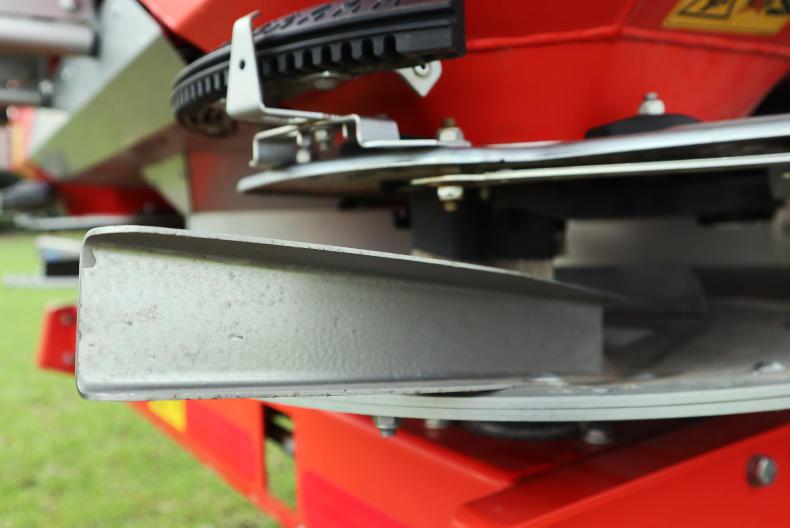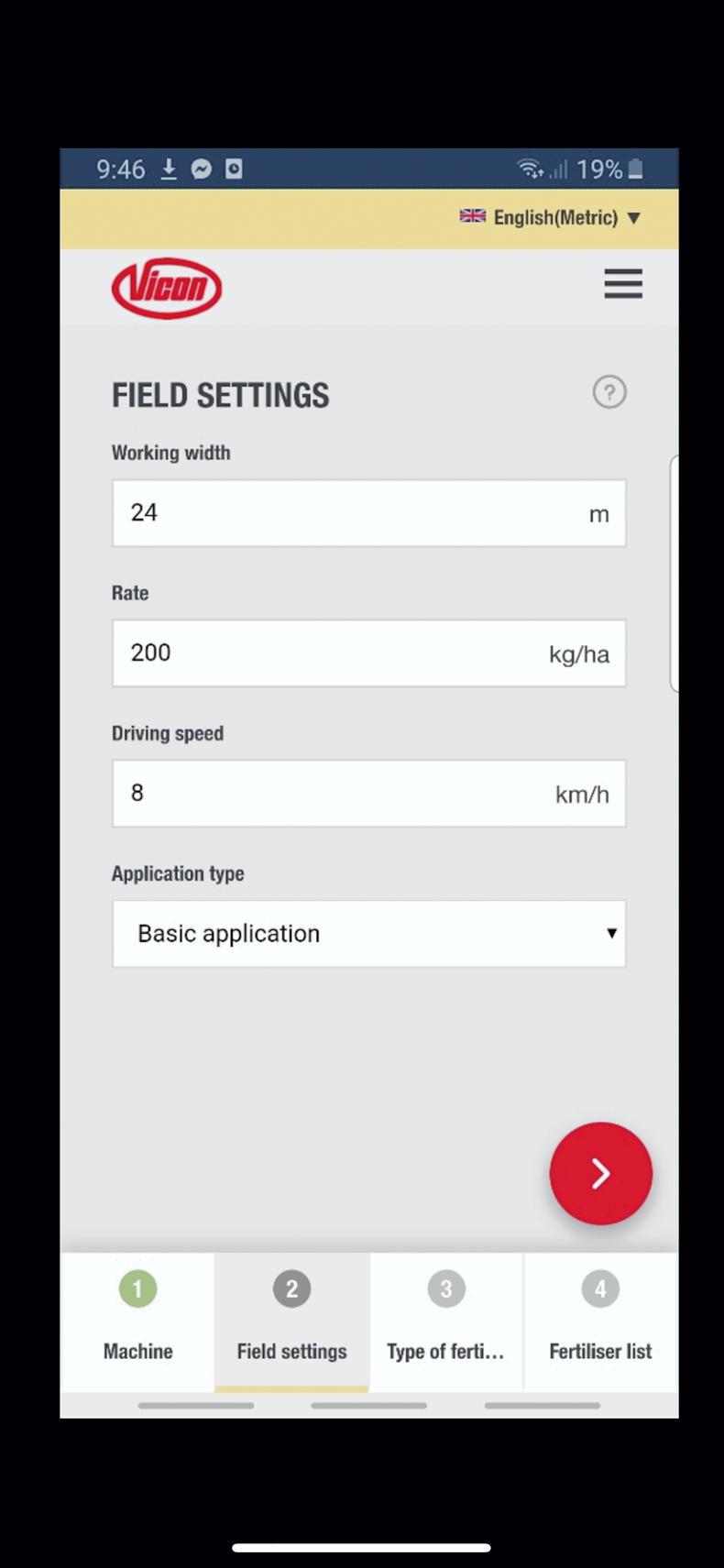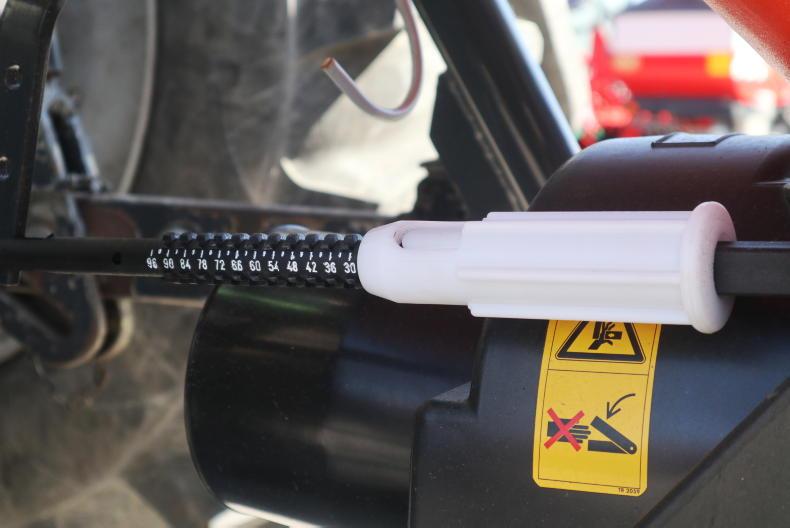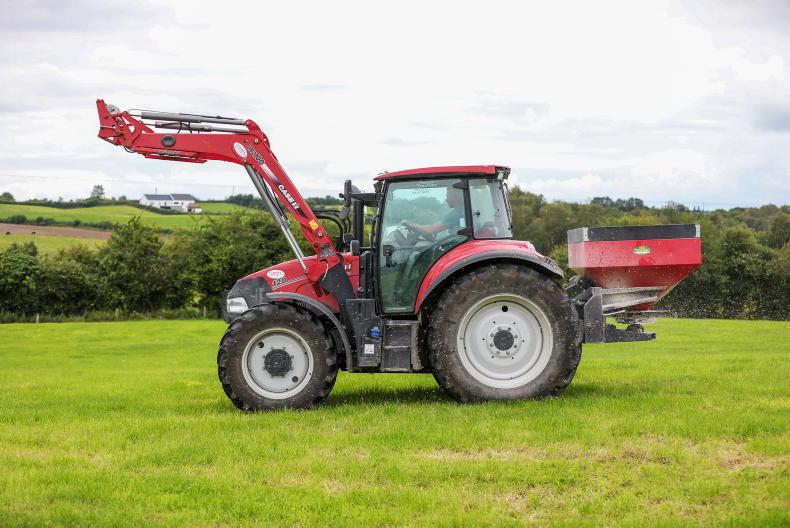After the prolonged dry period in recent weeks, many farmers across the country have held off on spreading fertiliser due to the lack of moisture in the soil and to avoid the possibility of N losses to the atmosphere, especially in circumstances were unprotected N products are being used.
Now, with showers forecast, many farmers will use the opportunity wisely to spread fertiliser for grazing and second-cut meadows.
However, before doing so it may prove worthwhile to give the spreader a once-over having sat idle for the past number of weeks.
1 Machine inspection
Start by inspecting the frame, the hopper and spreading mechanism for signs of wear or fatigue, bearing in mind that cracks or corrosion may affect its overall load-carrying ability. Hopper shutters should be in good working condition. For example, closing fully when closed and opened evenly to the desired setting. Worn linkages or other regulator components can affect a spreader’s output and may result in an uneven spread pattern.
Good vanes are critical in achieving an accurate spread pattern. Vanes that have a rough or wrinkled surface and leading edge that isn’t straight will need to be replaced. What appears to be a small bit of wear here will have a large affect on the machine’s spread pattern, especially at wider bout widths.
Bearings should be checked for wear. On a disc machine, do this by shaking each of the discs vertically. There should be no movement. If so, the chances are there is a bearing and/or shaft(s) in need of replacing.
The agitator bearing should also be checked, along with any other moving parts. All grease points should be greased before mounting on the tractor.
Headland management systems, if fitted need to be quickly examined. Make sure they are engaging and disengaging fully. Depending on the machine, this is either done via deflector kit or by changing the direction of the discs so that discs rotate in the opposite direction.

Vanes should be smooth with little to no signs of wear.
2 Correct mounting
Ensure the drops are equal in length using a measuring tape and check that rear tyre pressures are equal before mounting the spreader. Once the spreader is mounted, the stabilisers should be snug, with the spreader centrally mounted; any lateral movement will affect spread pattern.
Raise the spreader to the correct working height and adjust the toplink so that the spreader is sitting at the angle as advised by the manufacturer’s spread chart. The general rule of thumb is 75cm from the top of the crop to the spreading mechanism (discs or wagtail).

Insure both drop arms are even in length and that rear tyre pressures are equal before mounting.
3 Disc spreader calibration
A disc machine has two main areas of adjustment – hopper flow rate and disc/vane settings. The steps involved in setting the flow rate on both wagtail and disc machines are similar. Depending on the spreader, vane type/position, fertiliser drop point, disc size and toplink angle may need to be adjusted in accordance with the spread chart for the selected product at the set working width (m), application rate (kg/ha), forward speed (km/h) and type of fertiliser being applied. All of this information will be outlined on the spread chart.
Most manufacturers have mobile phone apps that show spread charts and have calculators that allow you to input the spreading variables and desired criteria before providing the relevant machine settings needed to achieve this. By now, most manufacturers have a sizeable selection of fertiliser types and brands already tested in their test halls. The spread chart will also indicate the accurate kg/min for each particular fertiliser to suit each particular machine.
To calibrate, shut off one side and remove the disc on the other side before fitting on the calibration container. The spreader should be run for one minute while the container gathers the fertiliser. The container’s weight after one minute should match the kg/min rate as displayed by the app or spread chart.

Most spreader manufacturers have mobile apps that calculate the specific settings based on spreading variables such as bout width, application rate etc.
4 Wagtail calibration
A wagtail spreader has one area of adjustment and this is flow rate. Flow rate on a wagtail is adjusted by moving the regulator. The one regulator setting will not work for all fertilisers, as flow rates vary depending on the fertiliser’s characteristics (shape, size and brand). No two samples are the same.
To calibrate a wagtail, remove the spout and fit on a calibration container. The app or spread chart will provide a rate in kg/min which should match that coming from the spreader. Run the spreader at the setting recommended by the app or spread chart and then weigh the fertiliser that comes out over the course of 60 seconds. If the two figures don’t match up, some fine-tuning may be required. Once the flow rate has been set using the regulator, a wagtail requires no further setting up.

Flow rate on a wagtail is adjusted by moving the regulator.
5 Good spreading practice
Once the machine has been correctly mounted and set up for the desired product, the operator needs to drive accurately in the field.
Ensure both the PTO and forward speed are correct and that the correct bout width is being maintained. Once the PTO speed has been set to 540rpm, forward speed can be altered by changing gears. Bout width tends to be easily maintained when spreading in the region of 10-12m. Spreading wider bout widths or in a recently cut field, it becomes much more difficult to maintain accuracy. Given the cost of fertiliser, it may be worth considering investing in a low cost manual GPS guidance system.
After the prolonged dry period in recent weeks, many farmers across the country have held off on spreading fertiliser due to the lack of moisture in the soil and to avoid the possibility of N losses to the atmosphere, especially in circumstances were unprotected N products are being used.
Now, with showers forecast, many farmers will use the opportunity wisely to spread fertiliser for grazing and second-cut meadows.
However, before doing so it may prove worthwhile to give the spreader a once-over having sat idle for the past number of weeks.
1 Machine inspection
Start by inspecting the frame, the hopper and spreading mechanism for signs of wear or fatigue, bearing in mind that cracks or corrosion may affect its overall load-carrying ability. Hopper shutters should be in good working condition. For example, closing fully when closed and opened evenly to the desired setting. Worn linkages or other regulator components can affect a spreader’s output and may result in an uneven spread pattern.
Good vanes are critical in achieving an accurate spread pattern. Vanes that have a rough or wrinkled surface and leading edge that isn’t straight will need to be replaced. What appears to be a small bit of wear here will have a large affect on the machine’s spread pattern, especially at wider bout widths.
Bearings should be checked for wear. On a disc machine, do this by shaking each of the discs vertically. There should be no movement. If so, the chances are there is a bearing and/or shaft(s) in need of replacing.
The agitator bearing should also be checked, along with any other moving parts. All grease points should be greased before mounting on the tractor.
Headland management systems, if fitted need to be quickly examined. Make sure they are engaging and disengaging fully. Depending on the machine, this is either done via deflector kit or by changing the direction of the discs so that discs rotate in the opposite direction.

Vanes should be smooth with little to no signs of wear.
2 Correct mounting
Ensure the drops are equal in length using a measuring tape and check that rear tyre pressures are equal before mounting the spreader. Once the spreader is mounted, the stabilisers should be snug, with the spreader centrally mounted; any lateral movement will affect spread pattern.
Raise the spreader to the correct working height and adjust the toplink so that the spreader is sitting at the angle as advised by the manufacturer’s spread chart. The general rule of thumb is 75cm from the top of the crop to the spreading mechanism (discs or wagtail).

Insure both drop arms are even in length and that rear tyre pressures are equal before mounting.
3 Disc spreader calibration
A disc machine has two main areas of adjustment – hopper flow rate and disc/vane settings. The steps involved in setting the flow rate on both wagtail and disc machines are similar. Depending on the spreader, vane type/position, fertiliser drop point, disc size and toplink angle may need to be adjusted in accordance with the spread chart for the selected product at the set working width (m), application rate (kg/ha), forward speed (km/h) and type of fertiliser being applied. All of this information will be outlined on the spread chart.
Most manufacturers have mobile phone apps that show spread charts and have calculators that allow you to input the spreading variables and desired criteria before providing the relevant machine settings needed to achieve this. By now, most manufacturers have a sizeable selection of fertiliser types and brands already tested in their test halls. The spread chart will also indicate the accurate kg/min for each particular fertiliser to suit each particular machine.
To calibrate, shut off one side and remove the disc on the other side before fitting on the calibration container. The spreader should be run for one minute while the container gathers the fertiliser. The container’s weight after one minute should match the kg/min rate as displayed by the app or spread chart.

Most spreader manufacturers have mobile apps that calculate the specific settings based on spreading variables such as bout width, application rate etc.
4 Wagtail calibration
A wagtail spreader has one area of adjustment and this is flow rate. Flow rate on a wagtail is adjusted by moving the regulator. The one regulator setting will not work for all fertilisers, as flow rates vary depending on the fertiliser’s characteristics (shape, size and brand). No two samples are the same.
To calibrate a wagtail, remove the spout and fit on a calibration container. The app or spread chart will provide a rate in kg/min which should match that coming from the spreader. Run the spreader at the setting recommended by the app or spread chart and then weigh the fertiliser that comes out over the course of 60 seconds. If the two figures don’t match up, some fine-tuning may be required. Once the flow rate has been set using the regulator, a wagtail requires no further setting up.

Flow rate on a wagtail is adjusted by moving the regulator.
5 Good spreading practice
Once the machine has been correctly mounted and set up for the desired product, the operator needs to drive accurately in the field.
Ensure both the PTO and forward speed are correct and that the correct bout width is being maintained. Once the PTO speed has been set to 540rpm, forward speed can be altered by changing gears. Bout width tends to be easily maintained when spreading in the region of 10-12m. Spreading wider bout widths or in a recently cut field, it becomes much more difficult to maintain accuracy. Given the cost of fertiliser, it may be worth considering investing in a low cost manual GPS guidance system.











 This is a subscriber-only article
This is a subscriber-only article











SHARING OPTIONS: